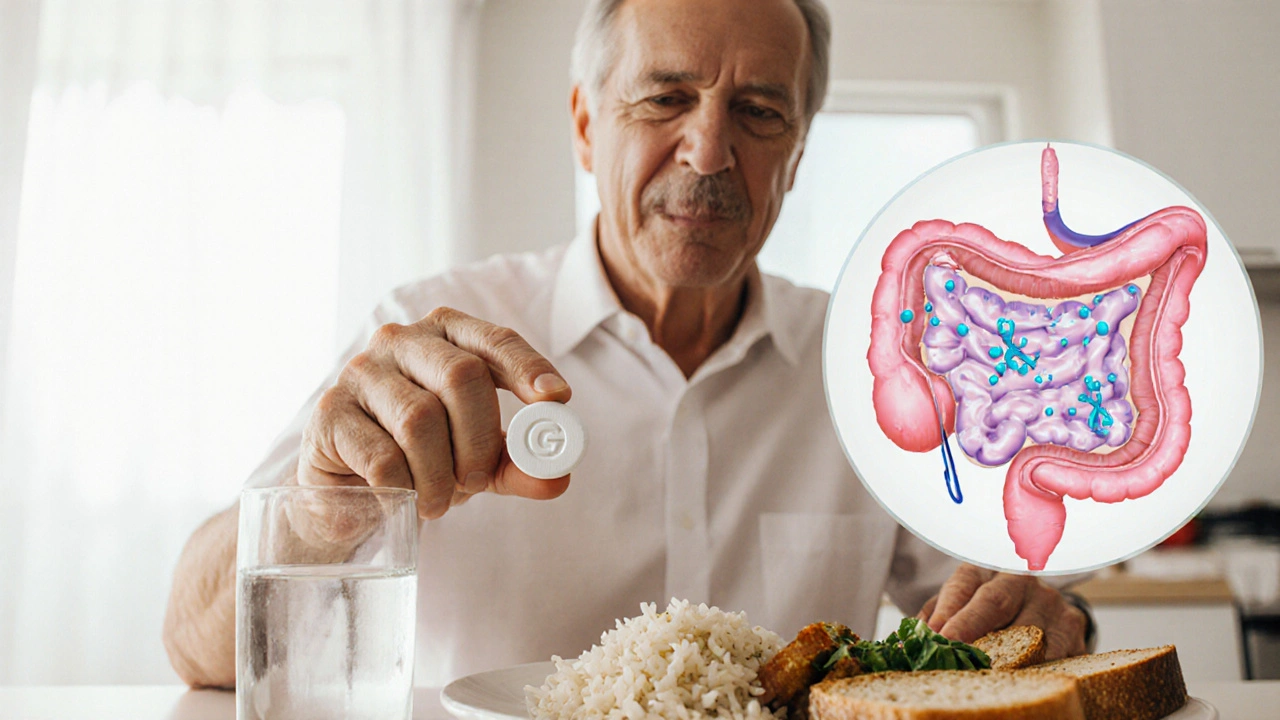Miglitol – Detailed Guide for Diabetes Management
When working with Miglitol, an oral alpha‑glucosidase inhibitor that reduces post‑meal blood glucose spikes in type 2 diabetes. Also known as Glyset, it slows carbohydrate digestion in the intestine, allowing a smoother glucose curve.
Type 2 diabetes is a metabolic disorder where the body's cells become resistant to insulin, causing chronically elevated blood sugar. Effective control usually blends lifestyle changes with one or more oral agents.
Alpha‑glucosidase inhibitors are a drug class that blocks the enzyme responsible for breaking down complex carbs in the gut. By delaying carbohydrate absorption, they flatten the post‑prandial glucose curve.
How Miglitol Works and When to Use It
Miglitol inhibits the alpha‑glucosidase enzyme, which slows the conversion of starches to glucose, so blood sugar rises more gently after meals. This mechanism makes the drug especially useful for patients who see big spikes after eating high‑carb meals. It does not affect fasting glucose, so it is typically added to a regimen that already includes a basal agent like metformin.
Starting doses are low—usually 25 mg taken with the first bite of a meal—to let the gut adjust. Doctors often increase by 25 mg every two weeks until the desired effect is seen, with a usual maximum of 100 mg per meal. This gradual titration helps keep gastrointestinal side‑effects—bloating, flatulence, and mild diarrhea—under control.
When comparing Miglitol to other oral drugs, the picture becomes clearer. Sulfonylureas such as Glimepiride boost insulin release, which can cause low blood sugar if meals are missed. Metformin reduces liver glucose output but does not blunt post‑meal spikes. Miglitol fills that niche without raising hypoglycemia risk, making it a safe add‑on for many patients.
Managing the occasional stomach upset is mostly about timing and diet. Taking the medication right at the start of a meal, eating slowly, and choosing low‑fiber carbs can reduce gas. Some clinicians recommend a short trial of a probiotic or a fiber supplement to ease transition.
Monitoring is key. Patients should check blood sugar two hours after meals for the first few weeks to see how Miglitol is affecting their curves. Over time, a lower HbA1c—often a 0.5‑1.0 % drop—signals success. If targets aren’t met, doctors may consider combining Miglitol with a different class or adjusting the dose.
Weight management often goes hand‑in‑hand with type 2 diabetes therapy. Because Miglitol works by limiting carbohydrate absorption, some users experience modest weight loss, especially when paired with a calorie‑controlled diet. This can be a bonus for patients who also struggle with obesity‑related issues like reduced sexual health.
Below you’ll find a curated set of articles that dive deeper into the topics we touched on—dose‑titration charts, side‑effect management tips, and comparisons with other diabetes medications. These resources will help you apply what you’ve learned to real‑world decisions and keep your blood sugar on track.

Glyset (Miglitol) vs Other Diabetes Drugs: In‑Depth Comparison
- Oct, 14 2025
- Daniel Remedios
- 7 Comments
A detailed side‑by‑side look at Glyset (miglitol) versus other diabetes drugs, covering how they work, pros, cons, costs, and when each is best for you.
